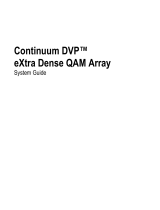
OM-274231 Page 4
2-3. Dangers supplémentaires en relation avec l’installation, le fonctionnement et la maintenance
LA CHUTE DE L’ÉQUIPEMENT peut
provoquer des blessures.
D Utilisez les procédures correctes et des
équipements
d’une capacité appropriée pour
soulever et supporter l’appareil.
D En utilisant des fourches de levage pour
déplacer l’unité, s’assurer que les fourches
sont suffisamment longues pour dépasser du
côté opposé de l’appareil.
D Tenir l’équipement (câbles et cordons) à distance des véhicules
mobiles lors de toute opération en hauteur.
D Suivre les consignes du Manuel des applications pour l’équation
de levage NIOSH révisée (Publication Nº94–110) lors du levage
manuelle de pièces ou équipements lourds.
L’EMPLOI EXCESSIF peut
SURCHAUFFER L’ÉQUIPEMENT.
D Prévoir une période de refroidissement ;
respecter le cycle opératoire nominal.
D Ne pas obstruer les passages d’air du poste.
LIRE LES INSTRUCTIONS.
D Lire et appliquer les instructions sur les
étiquettes
et le Mode d’emploi avant
l’installation,
l’utilisation ou l’entretien de
l’appareil.
Lire les informations de sécurité au
début du manuel et dans chaque section.
D N’utiliser que les pièces de rechange recommandées par le
constructeur.
D Effectuer l’installation, l’entretien et toute intervention selon les
manuels d’utilisateurs, les normes nationales, provinciales et de
l’industrie,
ainsi que les codes municipaux.
D Lire et comprendre les fiches de données de sécurité et les
instructions du fabricant concernant les adhésifs, les revêtements,
les nettoyants, les consommables, les produits de refroidissement,
les dégraisseurs, les flux et les métaux.
Les PIÈCES MOBILES peuvent
causer des blessures.
D S’abstenir de toucher des organes mobiles tels
que des ventilateurs.
D Maintenir fermés et verrouillés les portes,
panneaux, recouvrements et dispositifs de
protection.
D Lorsque cela est nécessaire pour des travaux d’entretien et de
dépannage,
faire retirer les portes, panneaux, recouvrements
ou dispositifs de protection uniquement par du personnel
qualifié.
D Remettre les portes, panneaux, recouvrements ou dispositifs de
protection quand l’entretien est terminé et avant de rebrancher
l’alimentation électrique.
LA VAPEUR ET LE LIQUIDE DE
REFROIDISSEMENT CHAUD peuvent
provoquer des brûlures.
Un tuyau peut se rompre lorsque le liquide de
refroidissement
surchauffe.
D Vérifiez visuellement l’état des tuyaux avant
chaque utilisation. N’utilisez pas de tuyaux
endommagés.
D Laissez refroidir avant d’intervenir sur l’équipement.
LES LIQUIDES SOUS HAUTE PRESSION
peuvent provoquer des blessures ou la
mort.
D Liquide de refroidissement sous haute
pression.
D Libérez la pression avant d’intervenir sur le
refroidisseur.
D En cas d’injection d’un liquide QUELCONQUE dans la peau ou
le corps, consultez immédiatement un médecin.
2-4. Proposition californienne 65 Avertissements
AVERTISSEMENT : ce produit peut vous exposer à des
produits chimiques tels que le plomb, reconnus par l’État de
Californie comme cancérigènes et sources de malformations
ou d’autres troubles de la reproduction.
Pour plus d’informations, consulter www.P65W
arnings.ca.gov
.
2-5. Principales normes de sécurité
Safety in Welding, Cutting, and Allied Processes, ANSI Standard Z49.1,
is available as a free download from the American Welding Society at
http://www.aws.org or purchased from Global Engineering Documents
(phone: 1-877-413-5184, website: www
.global.ihs.com).
Safe Practices for the Preparation of Containers and Piping for Welding
and Cutting, American Welding Society Standard AWS F4.1, from
Global Engineering Documents (phone: 1-877-413-5184, website:
www
.global.ihs.com).
Safe Practices for Welding and Cutting Containers that have Held
Combustibles, American Welding Society Standard AWS A6.0, from
Global Engineering Documents (phone: 1-877-413-5184,
website: www
.global.ihs.com).
National Electrical Code, NFPA Standard 70, from National Fire
Protection Association, Quincy, MA 02169 (phone: 1-800-344-3555,
website: www.nfpa.org and www. sparky.org).
Safe Handling of Compressed Gases in Cylinders, CGA Pamphlet P-1,
from Compressed Gas Association, 14501 George Carter Way, Suite
103, Chantilly, VA 20151 (phone: 703-788-2700, website:
www.cganet.com).
Safety in Welding, Cutting, and Allied Processes, CSA Standard
W117.2, from Canadian Standards Association, Standards Sales, 5060
Spectrum Way, Suite 100, Mississauga, Ontario, Canada L4W 5NS
(phone: 800-463-6727, website: www.csagroup.org).
Safe Practice For Occupational And Educational Eye And Face
Protection, ANSI Standard Z87.1, from American National Standards
Institute, 25 West 43rd Street, New York, NY 10036 (phone:
212-642-4900, website: www.ansi.org).
Standard for Fire Prevention During Welding, Cutting, and Other Hot
Work, NFPA Standard 51B, from National Fire Protection Association,
Quincy, MA 02269 (phone: 1-800-344-3555, website: www.nfpa.org).
OSHA, Occupational Safety and Health Standards for General
Industry, Title 29, Code of Federal Regulations (CFR), Part 1910,
Subpart Q, and Part 1926, Subpart J, auprès du U.S. Government
Printing Office, Superintendent of Documents, P.O. Box 371954,
Pittsburgh, PA 15250-7954 (téléphone : 1-866-512-1800) (il y a 10
bureaux régionaux––le téléphone de la région 5, Chicago, est
3123532220,
site Internet : www.osha.gov).
Applications Manual for the Revised NIOSH Lifting Equation, The
National Institute for Occupational Safety and Health (NIOSH), 1600
Clifton Rd, Atlanta, GA 30329-4027 (phone: 1-800-232-4636, website:
www.cdc.gov/NIOSH).





















